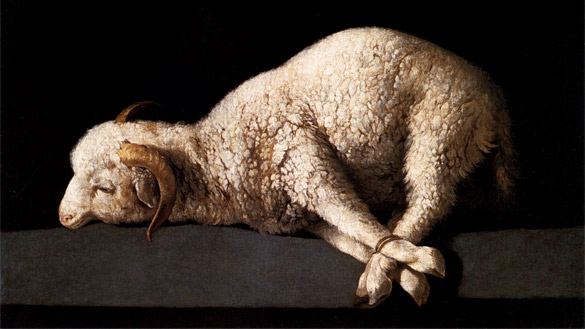
There is more than one way to skin a cat (or so I’m told), and the same holds true for teaching a doctrine. This fall I am teaching a seminar on the doctrine of the Atonement, and I am working through different ways of approaching it. All methods presume extensive interaction with Scripture, but variously navigate arrangements of history, theology, and contemporary discussion. It is worth noting that these alternatives are by no means exhaustive—they are just a first foray into the delightfully complex world of this doctrine.
- History of Doctrine: This would be the bread and butter approach, spending one to two weeks on the key figures in the history of the doctrine including Irenaeus, Athanasius, Augustine, Gregory of Nyssa, Anselm, Thomas, Calvin, Edwards, Barth and von Balthasar. Students would gain a rich appreciation of the doctrine as a whole, and be well equipped to interact with contemporary debates. The weakness would be a necessary shallowness in their appreciation of the history given the amount of material covered in so little time, and virtually no interaction with contemporary issues.
- Recapitulation: Class would focus on the theme of “recapitulation” throughout the history of the doctrine – a theme with considerable traction in contemporary discussion. The benefit of such an approach is that it integrates history and contemporary development, providing a great angle for appreciating the role of the Old and New Testaments in the doctrine. It also introduces students to some of the key figures and provides a great hermeneutic by means of which to engage other theories or questions within the doctrine. We would work extensively with Irenaeus, and from there, briefly touch on Athanasius, Gregory of Nyssa, Anselm, Kierkegaard, Barth, and Biblical Studies, with a long concluding section interacting with contemporary work on the subject. The primary weakness of the approach is that it is somewhat narrow, focusing on just one thread within the doctrine.
- Contemporary Polemics: This path would tackle the doctrine through the primary polemic fronts of current discussions—the virtual opposite of the “History of Doctrine” approach. We would weave in classic sources here and there, but primarily it would map current discussions, including Penal Substitution, Feminist critiques and contributions, Christus Victor, questions concerning divine violence, and varying appropriations of René Girard’s thought. The weakness of such an approach is that all the resources and premises provided by the history of the church’s reflection on this subject are left out. The conversation is very interesting, but poorly equipped.
- A Handful of Main Figures: This would be a variant of the “History of Doctrine” approach, in which we would spend a much larger amount of time on the handful of figures that I consider to be the most influential in the history of the doctrine. We would read widely in the thought of each figure, including Athanasius, Anselm and Barth. Such an approach benefits from close interactions with key figures, but looses some scope in the process. It may be the best way, though, to prepare for further work in the doctrine, by relative mastery of some of the main figures.
- Cutting Edges: This is variant of the “Contemporary Polemics” option would explore what I take to be the most creative, interesting and helpful areas of development within the doctrine today. Rather than tackling the problems or questions, it would explore those aspects of the doctrine that are undergoing some of the most creative and potentially helpful development, including: Holy Saturday, Divine Suffering, and the relation of Trinity and Atonement. While very exciting, it suffers from all the weaknesses of the “Contemporary Polemics” approach.
- Focus on a single period: This variant of the “History of Doctrine” approach would select a single period of the church, and dive into it quite deeply, covering a range of figures, reading some secondary sources on the period, etc. Candidates would include: Early church (Apostolic Fathers, Irenaeus, Athanasius, Cappadocians, Augustine), Medieval (Lombard, Abelard, Anselm, Bernard, Thomas, Scotus), Reformation (Luther, Calvin, Cranmer, Anabaptists, counter-Reformation theologians), Modern (Kant, Hegel, Schleiermacher, Edwards, von Harnack, Baur, Ritschl, Wesley), and 20th Century (Barth, von Balthasar, Girard, Aulén). This approach benefits from close interactions with key figures, but loses some scope in the process. It benefits from extended interaction with a single period of the history of the church, which yields several benefits for theological education generally.
- Locating the Doctrine of the Atonement: This approach would explore the doctrine of the atonement in its relationship to each major locus of dogmatic theology, such as how it relates to the doctrines of revelation, the Trinity, ecclesiology, etc. It would engage the task by interaction with historical and contemporary sources. It would help train the students in the theological task, but would suffer from a lack of historical coherence.
From this it is obvious that the doctrine of the atonement, like other doctrines, is an incredibly rich, varied and nuanced. There are countless ways to approach it profitably: one could spend a lifetime devoted to its study, and any “class” on the subject is at best the most cursory of introductions, preparing the students for what will hopefully be a lifetime of study of the topic.